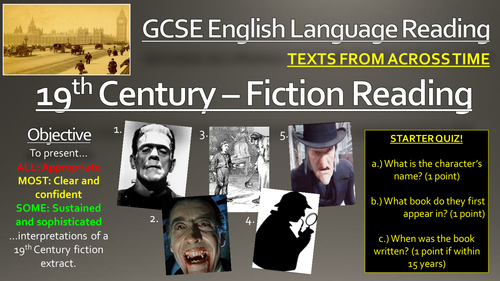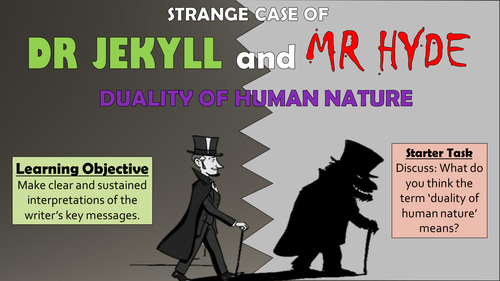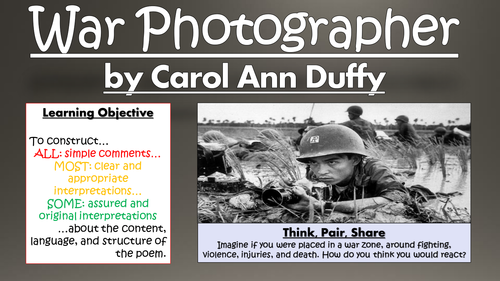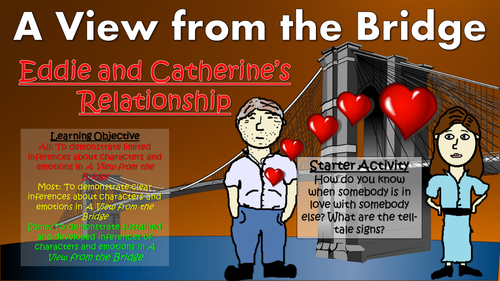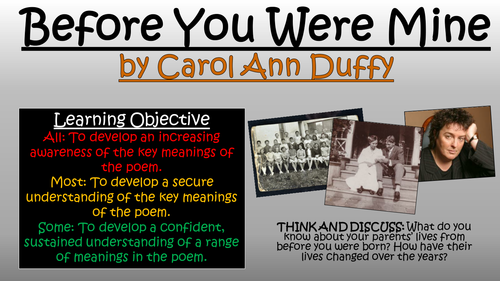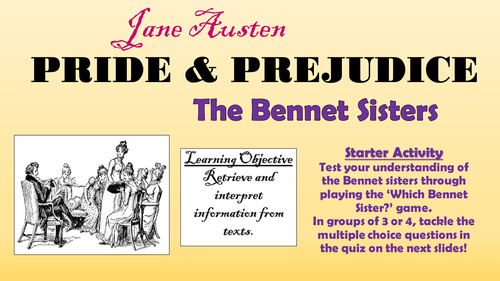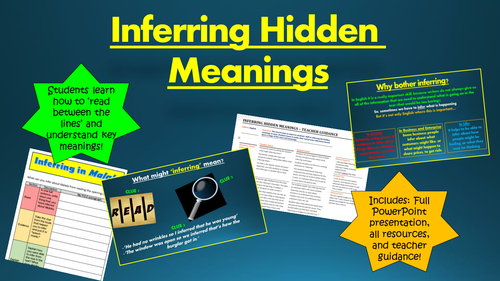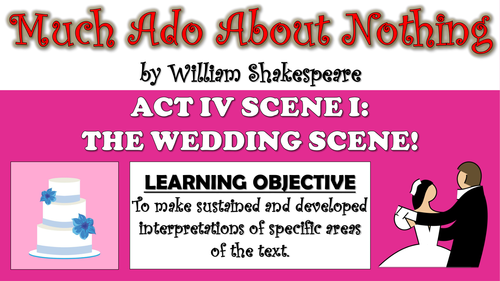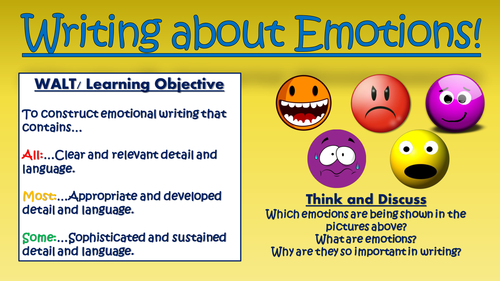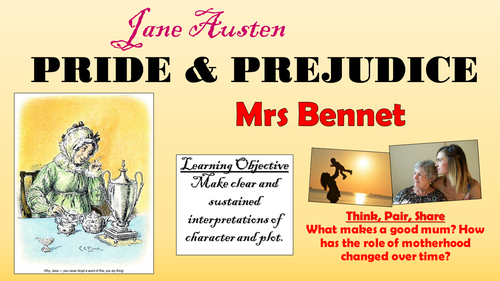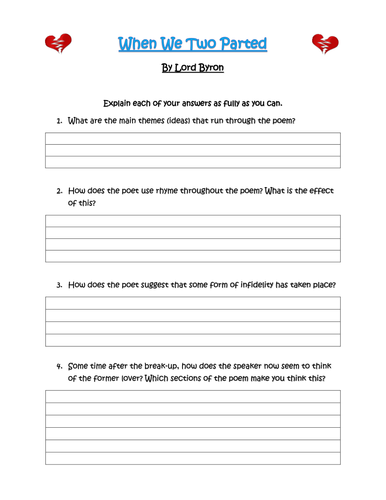
3k+Uploads
1925k+Views
2250k+Downloads
New teachers

Travel Writing: Constructing Imaginative Language
This engaging and stimulating lesson enables students to create travel writing texts containing appropriate and imaginative language choices, utilising a range of different language techniques with subtlety in order to craft vivid and thought-provoking writing. In particular, students learn how the subtle use of varied verbs, adverbs, and adjectives, in addition to descriptive devices such as similes, metaphors, and personification, can help to create truly authentic and descriptive travel writing pieces.
The lesson follows a clear, logical, bite-size learning journey, which guides students towards differentiated learning objectives. Over the course of this journey, they become able to:
- Define and identify verbs, adverbs, and adjectives, and understand the effects of varying these basic sentence building blocks;
- Employ appropriate and imaginative verbs, adverbs, and adjectives to describe a range of travel images;
- Understand and analyse how more advanced descriptive devices (similes, metaphors, personification, alliteration, and assonance) influence the effect of writing;
- Analyse a model travel writing attempt in relation to language features, before creating their own;
- Self/Peer assess travel writing attempts.
This resource pack includes:
- A visually engaging whole-lesson PowerPoint presentation;
- An interesting and ambitious travel writing extract (with a highlighted version for teachers):
-A logical and challenging worksheet, encouraging students to identify and analyse;
- A detailed lesson plan, complete with what the teacher and students should aim to achieve at each stage of the lesson.
All images are licensed for commercial use, and are cited on the final slide of the PowerPoint.

New GCSE English Language Reading: 19th Century Fiction
These informative and engaging resources enable students to build the skills needed to interpret and analyse 19th Century fiction texts. This will aid students through the new Paper 1 Section A of GCSE English Language - for which they need to become confident readers of 19th, 20th, and 21st Century texts. These resources give students a strong foundation of knowledge of features of fiction texts in the 19th Century, using Mary Shelley's Frankenstein as the predominant example. There are easily enough resources for at least two lessons within this resource pack.
Students learn through the following tasks:
- Gauging and collaborating previous knowledge through an interactive starter task;
- Identifying the descriptive devices in sentences written about 19th Century characters;
- Building close reading skills through a study of a fiction extract from Frankenstein
- Answering exam-style questions interpreting and inferring the key meanings in the text;
- Using models and templates to write extended analysis responses about the descriptive language used in the fiction extract;
- Peer assessing their partners' learning attempts.
The following resources are provided:
- Engaging and colourful step-by-step PowerPoint
- Frankenstein extract
- Teacher lesson guidance;
- Interpretation worksheet;
- Analysis worksheet;
- Writing to analyse help-sheet
All images are licensed for commercial use, and are cited on the final slide of the PowerPoint.

Ozymandias - Percy Bysshe Shelley
This engaging, comprehensive lesson provides an interesting and highly-informative study of Percy Bysshe Shelley's power and conflict poem: 'Ozymandias.' Throughout the lesson, students gain a detailed understanding of the poem, with a particular focus upon the content, language, and structural features employed by Shelley. By the end of the lesson, students demonstrate their knowledge of the text analytically, through assured, appropriate, and sustained interpretations.
The lesson follows a step-by-step learning journey, in which children learn through:
- Defining the key concept of power, and considering its role and implications in man's actions;
- Securing contextual understanding of both Ozymandias the ruler, and Percy Bysshe Shelley the poet;
- Reading and interpreting the poem, using a provided line-by-line analysis, and interactive group activities;
- Developing their understanding through inferring and analysing key language and structural choices;
- Analysing how the theme of power is explored through Shelley's content, language, and structure;
- Peer assessing each other's learning attempts.
Included is:
- Whole lesson PowerPoint - colourful and substantial; (including hyperlinks to informative and engaging videos)
- Copy of poem;
- Content, language and structure mind map;
- Deeper thinking worksheet;
- Analysis template with success criteria for creating well-structured responses;
- Comprehensive lesson plan.
There are also opportunities for group learning, peer assessment, and whole class discussion. This was originally taught to middle-ability year 9/10 groups, but can easily be differentiated for groups of different ages and abilities.
All images are licensed for commercial use, and image rights are listed on the last page of the presentation.

Dr Jekyll and Mr Hyde: Duality of Human Nature!
This engaging and informative lesson enables students to make sustained and insightful interpretations of the theme of duality within Stevenson’s ‘Strange Case of Dr Jekyll and Mr Hyde.’ In particular, students explore the differences in personality between Jekyll and Hyde, and infer Stevenson’s key messages about the duality of human nature.
The lesson follows a step-by-step learning journey, in which children learn through:
- Defining and understanding the belief in the duality of human nature across history;
- Reading and comprehending Jekyll's view of the duality of human nature in the final chapter;
- Comparing and contrasting the personalities of Jekyll and Hyde;
- Retelling the same event from the viewpoint of both Jekyll and Hyde;
- Analysing Stevenson's key message about the duality of the mind;
- Peer assessing each other's learning attempts.
Included is:
- Whole lesson PowerPoint - colourful and comprehensive;
- Extract from the final chapter;
- Jekyll's duality worksheet (and answer sheet for teachers);
- Analysis template with success criteria for creating well-structured responses;
- Comprehensive lesson plan.
There are also opportunities for group learning, peer assessment, and whole class discussion. These resources were originally taught to GCSE students, but with subtle adaptations they have also been used with KS3 and A Level Students.
All images are licensed for commercial use, and image rights are listed on the last page of the presentation.

A View from the Bridge: Greek Tragedy - Eddie's Downfall!
This interesting and highly-stimulating lesson students to demonstrate a developed, sustained understanding of the structural features of the Greek Tragedy which are utilised in Arthur Miller’s A View from the Bridge. In particular, students engage analytically with Eddie’s ‘hamartia’ and catastrophic downfall at the end of Act II. Students examine how Eddie’s role as a tragic hero, his fatal flaw, and the sense of fate which runs throughout, mirrors the features of Greek Tragedies.
The lesson follows a clear, logical, bite-size learning journey, which guides students towards differentiated learning objectives. Over the course of this journey, they become able to:
- Define and identify the features of Greek Tragedies;
- Understand Miller's views towards Greek Tragedies, and his intentions for writing the play in this form;
- Identify the features of Greek Tragedy in A View from the Bridge;
- Critically engage with text as a Greek Tragedy, considering how Eddie's downfall is constructed by his fatal flaws, hamartia, and catastrophe;
-Peer assess each other's learning attempts.
This resource pack includes:
- A visually engaging whole-lesson PowerPoint presentation;;
- Paper copies and online links to the extract needed for the lesson (end section of Act Two);
- Greek Myths Definitions Cards;
- Greek Myths worksheet (including answer sheet for teachers);
- A logically scaffolded essay template;
- A detailed lesson plan, complete with what the teacher and students should aim to achieve at each stage of the lesson.
All images are licensed for commercial use, and are cited on the final slide of the PowerPoint.

War Photographer - Carol Ann Duffy
This engaging, comprehensive lesson aims to improve students’ understanding of Carol Ann Duffy’s contemporary war poem ‘War Photographer’ with particular focus upon the language and structure used within the poem to depict the photographer’s experiences. By the end of the lesson, students demonstrate their knowledge of the text analytically, through assured, appropriate, and sustained interpretations.
The lesson follows a step-by-step learning journey, in which children learn through:
- Defining the role of the war photographer, and understanding difficulties in their job;
- Securing contextual understanding of Carol Ann Duffy - the poet;
- Reading and interpreting the poem, using a provided line-by-line analysis, and interactive group activities;
- Developing their understanding through inferring and analysing key language and structural choices;
- Understanding how the war photographer's life varies between war-torn locations and 'Rural England;'
- Analysing how language and structure are used to portray the photographer' experiences;
- Peer assessing each other's learning attempts.
Included is:
- Whole lesson PowerPoint - colourful and substantial; (including hyperlinks to informative and engaging videos)
- Copy of poem;
- Deeper thinking worksheet (including a scaffolded version, and a teacher answer sheet);
- Analysis template with success criteria for creating well-structured responses;
- Comprehensive lesson plan.
There are also opportunities for group learning, peer assessment, and whole class discussion. This was originally taught to middle-ability year 9/10 groups, but can easily be differentiated for groups of different ages and abilities.
All images are licensed for commercial use, and image rights are listed on the last page of the presentation.

A View from the Bridge: Eddie and Catherine's Relationship
This interesting and highly-stimulating enables students to make clear and sustained inferences regarding the main characters and their relationships in Arthur Miller’s A View from the Bridge. In particular, students read between the lines in decoding the subtle cues suggestive of Eddie’s feelings towards Catherine in the opening stages of Act I.
The lesson follows a clear, logical, bite-size learning journey, which guides students towards differentiated learning objectives. Over the course of this journey, they become able to:
- Understand the key learning skill of inference;
-Infer key meanings from short extracts of texts;
- Read and understand the opening section of Act I, in which we are introduced to the Carbone family, and infer and interpret the key information provided regarding their relationships;
- Demonstrate an understanding of Eddie's hidden feelings for Catherine, and Beatrice's knowledge of this;
- Write an emotive diary entry from Beatrice's viewpoint, using evidence from the text to demonstrate an understanding the key meanings from the act;
-Peer assess each other's learning attempts.
This resource pack includes:
- A visually engaging whole-lesson PowerPoint presentation;;
- Paper copies and online links to the extract needed for the lesson (Beginning of Act I);
- Inferences worksheet (including answer sheet for teachers);
- A detailed lesson plan, complete with what the teacher and students should aim to achieve at each stage of the lesson.
All images are licensed for commercial use, and are cited on the final slide of the PowerPoint.

Out of the Blue - Simon Armitage - 9/11 Poem
These informative and engaging resources enable students to build the skills needed to interpret and analyse the langauge used in poems. These resources also give students a strong foundation knowledge, including the SMSC implications, of the events of 9/11 - an important historical day that should never be forgotten.
Students learn through the following tasks:
- Collecting and discussing knowledge of the events of the day through an interactive starter task;
- Reading the poem 'Out of the Blue' and identifying the descriptive devices throughout the poem;
- Discussing a model analytical paragraph about the language used in the poem, in order to form their own success criteria;
- Using a template to form their own analytical paragraphs about the language used in the poem;
- Using peer or self-assessment in order to establish their success at analysing language.
The following resources are provided:
- Engaging and colourful step-by-step PowerPoint
- Poem
- Teacher lesson guidance;
- Identifying worksheet;
- Analysis template;
- Writing to analyse help-sheet
- Analysis model
All images are licensed for commercial use, and are cited on the final slide of the PowerPoint.

Before You Were Mine - Carol Ann Duffy - Love/ Relationships Poetry
This interesting and engaging lesson enables students to build their knowledge of the content, language, and structure of Carol Ann Duffy’s contemporary relationships poem ‘Before You Were Mine.’ In particular, students learn how the poet’s use of vocabulary, devices, and poetic structure portray the contrasts in the mother’s life between past and present.
Students learn through a logical and step-by-step learning journey, including:
-Discussing and applying the key messages and meanings in the poem;
-Understanding key contextual information about the poet and her life;
-Reading and interpreting the poem;
-Understanding the poem, with a particular emphasis upon the content, language, and structural features;
-Writing an extended analysis piece based upon how Duffy reflects on her mother’s past and the changes that she has made to her life since becoming a mother;
-Peer assessing their partners' analysis attempts.
Included is:
- Whole lesson PowerPoint - colourful, engaging and substantial; (including hyperlink to a reading of the poem)
- Copy of poem;
- 'How has Ma Changed?' comparison worksheet;
- Analysis template with in-built success criteria for creating well-structured responses;
- Comprehensive lesson plan.
There are also opportunities for group learning, peer assessment, and whole class discussion. This was originally taught to middle-ability year 9/10 groups, but can easily be differentiated for groups of different ages and abilities.
All images are licensed for commercial use, and image rights are listed on the last page of the presentation.

A View from the Bridge: Miller's Language Devices!
This interesting and highly-stimulating lesson enables students to demonstrate a developed, sustained understanding of the language devices utilised in Arthur Miller’s A View from the Bridge. In particular, students engage analytically with Miller’s use of language at the beginning of Act II, in which Eddie Carbone appears to lose control over his actions. Students examine how similes, rhetorical questions, imperative commands, and other language features serve to highlight his descent into desperation.
The lesson follows a clear, logical, bite-size learning journey, which guides students towards differentiated learning objectives. Over the course of this journey, they become able to:
- Define and provide examples for each of the relevant language devices;
- Identify each of the language devices in short sentences, and begin to comment upon their effect;
- Understand some of Miller's intentions behind writing the play;
- Critically engage with Miller's use of language devices at the end of the Act Two, including the events leading up to Eddie's call to the Immigration Office;
-Peer assess each other's learning attempts.
This resource pack includes:
- A visually engaging whole-lesson PowerPoint presentation;;
- Paper copies and online links to the extract needed for the lesson (beginning section of Act Two);
- Language Devices Cards;
- Language Devices worksheet (including answer sheet for teachers);
- A logically scaffolded essay template;
- A detailed lesson plan, complete with what the teacher and students should aim to achieve at each stage of the lesson.
All images are licensed for commercial use, and are cited on the final slide of the PowerPoint.

Pride and Prejudice - Elizabeth Bennet
In this engaging and informative lesson, students are enabled to make clear and insightful interpretations of Elizabeth Bennet – the chief protagonist in Jane Austen’s Pride and Prejudice. In particular, students learn about her key characteristics- such as her strong ideas, wit, intelligence, grace, and good humour – and relate these to ideas of societal expectations of the time.
The lesson follows a step-by-step learning journey, in which students learn through:
- Playing a fun and interactive quiz to determine the key events and family life of Elizabeth Bennet;
- Establishing her characteristics and traits, utilising textual evidence;
- Analysing Elizabeth's character in relation to the expectations of society in the Regency Era;
- Creating clear and creative diary entries, using an in-depth understanding of Elizabeth's character;
- Peer assessing each other's learning attempts.
Included is:
- Whole lesson PowerPoint - colourful and comprehensive;
- 'Character Traits of Elizabeth' task resources - with teacher answer sheet;
- 'Elizabeth in Context' task resources - with teacher answer sheet;
- Comprehensive lesson plan.
There are also opportunities for group learning, peer assessment, and whole class discussion. These resources were originally taught to GCSE students, but with subtle adaptations they have also been used with both younger and older (up to A Level) students.
All images are licensed for commercial use, and image rights are listed on the last page of the presentation.

Pride and Prejudice - The Bennet Sisters!
In this engaging and informative lesson, students develop a deeper understanding of the Bennet sisters in Jane Austen’s Pride and Prejudice. In particular, students compare and contrast the sisters’ physical and emotional characteristics, and comprehend how each sister is implicated within the plot.
The lesson follows a step-by-step learning journey, in which students learn through:
- Playing a fun quiz to determine 'Which Sister?' is involved in different plot events;
- Reading and understanding how the sisters are introduced in the novel, using relevant textual evidence;
- Retrieving information from the text to create character profiles for each sister, including their age, physical and emotional descriptions;
- Comparing and contrasting each of the Bennet sisters analytically;
- Peer assessing each other's learning attempts.
Included is:
- Whole lesson PowerPoint - colourful and comprehensive;
- Extracts from Chapters 1, 2, and 3;
- 'Character Profile task resources - in Word and PDF form;
- Supportive and clear essay template;
- Comprehensive lesson plan.
There are also opportunities for group learning, peer assessment, and whole class discussion. These resources were originally taught to GCSE students, but with subtle adaptations they have also been used with both younger and older (up to A Level) students.
All images are licensed for commercial use, and image rights are listed on the last page of the presentation.

Inferring the Hidden Meanings in Texts
This lesson enables students to 'read between the lines' in texts and infer significant meanings. Utilising a range of visual, kinaesthetic, and reading tasks, students not only gain an increased understanding of the importance of inference in English, but also gain an awareness of its importance in other areas of life.
The lesson follows an interesting and engaging step-by-step learning journey, which helps students to:
- Define what inference is;
- Understand the importance of inference;
- Infer what they can see;
- Infer what they hear;
- Infer what they read, using key sentence starters and textual evidence;
- Formulate P.E.E. inference responses, where necessary utilising the included scaffolds and help-sheets;
- Peer/self assess their learning attempts.
Included in this resource pack:
- Full whole-lesson PowerPoint presentation;
- P.E.E scaffold sheet;
-Writing to analyse helpsheet;
- Pictures required for development task;
- Teacher guidance
All images are licensed for commercial use, and are cited on the final slide.

A View from the Bridge Comprehension Activities Booklet!
This resource booklet contains a wide range of age-appropriate, engaging, and meaningful comprehension activities for use throughout the reading of Arthur Miller’s ‘A View from the Bridge.’ Teachers have found them particularly useful in exam revision, comprehension tasks, or guided reading sessions. They are perfect for aiding the progress of students towards meeting the KS4 expectations within the new National Curriculum framework - this makes the tasks suitable for all examining bodies. Students have found these resources extremely engaging, and for teachers there is explicit information within each task regarding which comprehension strands the task is designed to demonstrate. They also relate to key extracts, characters, and themes from the story, ensuring that students gain a deep understanding of the text.
Activities within the booklet include:
- ‘Context: 1950s America’ - to aid students with ‘Drawing on knowledge of the purpose, audience and context of the writing, including its social, historical and cultural context and the literary tradition to which it belongs, to inform evaluation;’
- ‘Miller’s Description’ - to aid students with ‘Analysing a writer’s choice of vocabulary, form, grammatical and structural features, and evaluating their effectiveness and impact;’
- ‘Eddie’ - to aid students with ‘Seeking evidence in the text to support a point of view, including justifying inferences with evidence;’
- ‘Editing the Play’ - to aid students with ‘Making an informed personal response, recognising that other responses to a text are possible and evaluating these.’
Plus many, many more activities (the booklet is around 30 pages in length!) I’ve also added it as a PDF in case the formatting differs on your computer.
All images are licensed for commercial use, and are cited on a separate document (included).

Much Ado About Nothing - Act IV Scene I - The Wedding Scene!
This engaging, in-depth lesson enables students to understand how the plot events in the wedding scene create a sense of climax throughout Act IV Scene I of Much Ado About Nothing. In particular, the lesson focuses upon the language used by Claudio and Leonato to denounce Hero (with links to the expectations within the social/historical context of the renaissance), the dramatic response to the allegations, and Benedick's altering priorities.
The lesson follows a step-by-step learning journey, in which students learn through:
- Identifying the key events of the plot leading up to the wedding scene.
- Reading and comprehending the predominant plot events in Act IV Scene I.
- Understanding the idea of the patriarchal family society, and considering the accusations directed at Hero in light of this.
- Completing an essay style response in which they consider how the key plot events contribute to a sense of climax within the scene.
- Peer assessing each other's learning attempts.
Included is:
- Whole lesson PowerPoint - colourful and detailed - just download and teach from it!
- Cards for card-sorting activity;
- Wedding Scene worksheet (and teacher answer sheet);
- Analysis template with success criteria for creating well-structured responses;
- Comprehensive lesson plan.

Pride and Prejudice - Social and Historical Context!
This engaging and informative lesson enables students to gain a detailed insight into the social and historical context of Jane Austen’s 'Pride and Prejudice.' In particular, students learn about love, class, inheritance, and reputation in the Georgian and Regency eras – key themes throughout Austen’s novel. They then make clear and sustained links between the features of context and the text.
The lesson follows a step-by-step learning journey, in which students learn through:
- Playing a fun and interactive quiz about the life of Jane Austen;
- Completing carousel activities in groups to learn about the key features of love, class, inheritance, reputation, and royalty in the Georgian/ Regency eras;
- Linking their understanding of context to the key elements of the text;
- Analysing how Austen is influenced by key features of 19th Century life in 'Pride and Prejudice.'
- Peer assessing each other's learning attempts.
Included is:
- Whole lesson PowerPoint - colourful and comprehensive;
- All resources for the carousel activities, including sheets needed for 'Love and Courtship Blind Date', 'Social Class Detectives', and 'Georgian and Regency Royalty.'
- Analysis template with success criteria for creating well-structured responses;
- Comprehensive lesson plan.
There are also opportunities for group learning, peer assessment, and whole class discussion. These resources were originally taught to GCSE students, but with subtle adaptations they have also been used with both younger and older (up to A Level) students.
Please note that one of the introduction activities requires internet access.
All images are licensed for commercial use, and image rights are listed on the last page of the presentation.

Writing about Emotions!
This highly engaging and informative double lesson (around 1.5 to 2 hours of teaching materials) helps build students’ ability at using varied and imaginative techniques to describe emotions in their creative writing. Specifically, students learn how to create in-depth paragraphs detailing the emotional state of their narrator and characters, both implicitly and explicitly.
I wrote this lesson because I noticed that there are an extremely high volume of students that approach creative writing tasks (even in their GCSEs) offering little depth or detail in terms of their characters emotions. Even though they have clearly learnt a number of writing techniques from their teachers, their emotional writing often merely explicitly states how a character feels, using the same four or five emotions.
In this lesson, students learn:
- To define what emotions are;
- To understand and use the vast range of emotional vocabulary and synonyms available in the English language;
- To investigate different emotions, including how they can manifest themselves;
- To understand how emotions can be communicated utilising a range of descriptive devices;
- To create an imaginative and emotionally-driven piece of creative writing;
- To self-assess their creative writing attempts;
Included are all worksheets, and detailed and visual PowerPoint presentation, which explains each concept clearly, and a lesson plan for teacher guidance.

The Five Oceans - Knowledge Organiser!
This clear, detailed and visually-appealing resource offers a complete reference point for students revising knowledge relating to the five oceans, as a part of their study of locational knowledge in geography. It contains comprehensive sections on:
Overview and world map;
The Five Oceans Facts;
The Five Oceans by Size;
Deepest Points in the Oceans;
Interesting Ocean Features;
Top Ten Ocean Facts.
The resource is designed to be printed onto A3, and is provided as both a PDF and a Word version (so that you can edit if you want to). All images used are licensed for commercial use and are cited on a separate document (included). The resource is most suitable for students in KS1 or KS2.

Pride and Prejudice - Mrs Bennet!
In this engaging and informative lesson, students are enabled to make sustained and developed interpretations regarding the introduction and development of the character of Mrs Bennet in 'Pride and Prejudice.' In particular, students learn about how her tiresome, ungraceful, single-minded behaviour ironically alienates the very suitors that she hopes to attract for her daughters.
The lesson follows a step-by-step learning journey, in which students learn through:
- Establishing the extent to which Mrs Bennet fits the requirements of the 'Regency mother';
- Reading and understanding how Mrs Bennet is introduced in the novel, using relevant textual evidence;
- Tracking how her character develops through the notable events of the novel;
- Analysing how Austen introduces and develops Mrs Bennet's character throughout the novel;
- Peer assessing each other's learning attempts.
Included is:
- Whole lesson PowerPoint - colourful and comprehensive;
- Extract from Chapter 1;
- 'Development of Mrs Bennet' task resources - with teacher answer sheet;
- Supportive and clear essay template;
- Comprehensive lesson plan.
There are also opportunities for group learning, peer assessment, and whole class discussion. These resources were originally taught to GCSE students, but with subtle adaptations they have also been used with both younger and older (up to A Level) students.
All images are licensed for commercial use, and image rights are listed on the last page of the presentation.

When We Two Parted - Lord Byron - Love/ Relationships Poetry
This lesson enables students to build their knowledge of the content, language, and structure of Lord Byron’s classic love/relationships poem ‘When We Two Parted.’ In particular, students learn how the poet’s use of vocabulary, rhyme, and repetition influence the mood and tone of the poem.
Students learn through a logical and step-by-step learning journey, including:
-Understanding key contextual information about the poet and his life;
-Defining key terms and vocabulary from the poem;
-Reading and interpreting the poem;
-Understanding the poem, with a particular emphasis upon the content, language, and structural features;
-Writing an extended analysis piece based upon how Byron gets across the themes of sadness and forbidden love in the poem, through the use of language and structure;
-Peer assessing each other's learning attempts.
Included is:
- Whole lesson PowerPoint - colourful and substantial; (including hyperlink to a reading of the poem)
- Copy of poem;
- Key questions worksheet, with model answers;
- Analysis template with in-built success criteria for creating well-structured responses;
- Comprehensive lesson plan.
There are also opportunities for group learning, peer assessment, and whole class discussion. This was originally taught to middle-ability year 9/10 groups, but can easily be differentiated for groups of different ages and abilities.
All images are licensed for commercial use, and image rights are listed on the last page of the presentation.


